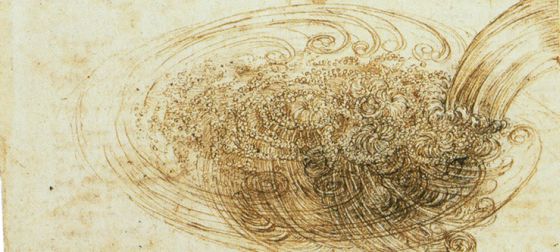
Philip Ball writes: When the German physicist Arnold Sommerfeld assigned his most brilliant student a subject for his doctoral thesis in 1923, he admitted that “I would not have proposed a topic of this difficulty to any of my other pupils.” Those others included such geniuses as Wolfgang Pauli and Hans Bethe, yet for Sommerfeld the only one who was up to the challenge of this subject was Werner Heisenberg.
Heisenberg went on to be a key founder of quantum theory and was awarded the 1932 Nobel Prize in physics. He developed one of the first mathematical descriptions of this new and revolutionary discipline, discovered the uncertainty principle, and together with Niels Bohr engineered the “Copenhagen interpretation” of quantum theory, to which many physicists still adhere today.
The subject of Heisenberg’s doctoral dissertation, however, wasn’t quantum physics. It was harder than that. The 59-page calculation that he submitted to the faculty of the University of Munich in 1923 was titled “On the stability and turbulence of fluid flow.”
Sommerfeld had been contacted by the Isar Company of Munich, which was contracted to prevent the Isar River from flooding by building up its banks. The company wanted to know at what point the river flow changed from being smooth (the technical term is “laminar”) to being turbulent, beset with eddies. That question requires some understanding of what turbulence is. Heisenberg’s work on the problem was impressive—he solved the mathematical equations of flow at the point of the laminar-to-turbulent change—and it stimulated ideas for decades afterward. But he didn’t really crack it—he couldn’t construct a comprehensive theory of turbulence.
Heisenberg was not given to modesty, but it seems he had no illusions about his achievements here. One popular story goes that he once said, “When I meet God, I am going to ask him two questions. Why relativity? And why turbulence? I really believe he will have an answer for the first.”
It is probably an apocryphal tale. The same remark has been attributed to at least one other person: The British mathematician and expert on fluid flow, Horace Lamb, is said to have hoped that God might enlighten him on quantum electrodynamics and turbulence, saying that “about the former I am rather optimistic.”
You get the point: turbulence, a ubiquitous and eminently practical problem in the real world, is frighteningly hard to understand. [Continue reading…]

